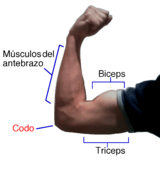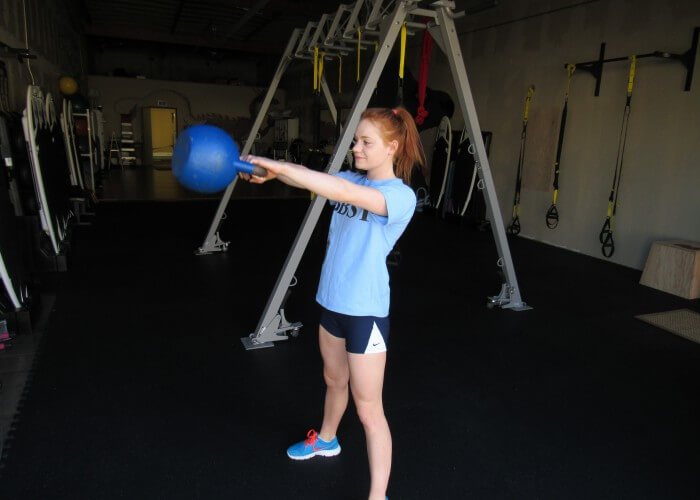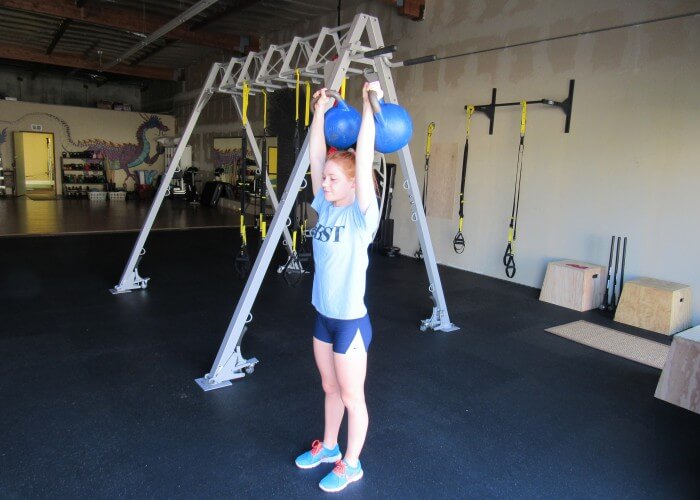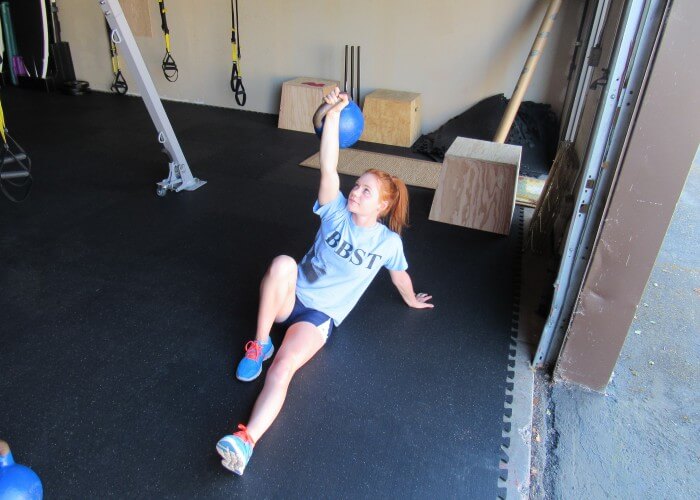5 Ways Kettlebells Are A Fantastic Dryland Training Tool
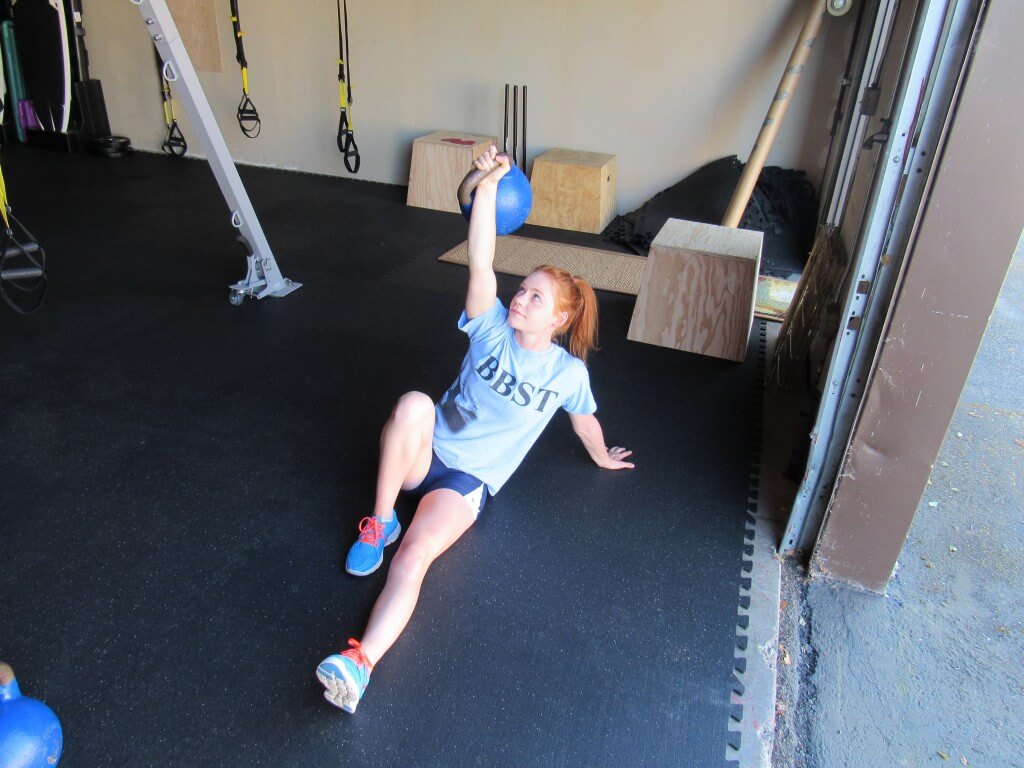
By Brad Jones, Swimming World contributor
During my four years as the Strength and Conditioning coach for the Bellingham Bay Swim Team (BBST), kettlebells have been one of the primary tools that we have used with the high school kids. We have seen incredible gains in strength and conditioning that have translated well to the pool. There has also been a significant reduction in shoulder injuries.
Our philosophy has been to gain strength by balancing the swimmers overall structure. Agonists muscles and antagonists muscles often occur in pairs. As one muscle contracts, the other relaxes. An example of an antagonistic pair is the biceps and triceps; to contract- the triceps relaxes while the biceps contracts to lift the arm.
At BBST, we have had great success not just focusing on strengthening the muscles that the swimmers use the most, but also focusing on the opposing muscle to create more balance. This balance has led to better overall strength, fewer injuries and a better body position in the water. The kettlebell has been a fantastic tool for achieving these goals.
During my swimming days in high school and college, we did a lot of strength training that primarily focused on muscles and movement patterns that were used a lot in swimming. While they have their place, there isn’t much evidence that dryland exercises that mimic swimming movement patterns, but add resistance (swim bench, stretch cords, etc.) translate to the pool. Swimmers are often putting more stress on already overworked soft tissue with these movements, which can lead to problems. Balancing a joint like the shoulder has led to greater strength gains and fewer injuries at BBST.
It is important to point out that the kettlebell is a tool. There are many tools to choose from when considering strength training for swimmers. I don’t want people to think that the kettlebell is some sort of “magic bullet.” Having said that, there are a number of factors that make the kettlebell a perfect fit for swimmers.
5 Ways Kettlebells Are A Fantastic Dryland Training Tool
1. Portability
Kettlebells can be kept and stored on deck in some sort of large plastic container. Without much room, swimmers can workout with kettlebells on deck, or outside. The swimmers love taking the kettlebells outside on a nice day and working out in the grass.
2. Full Body Movements
Like swimming, most of the exercises done with kettlebells work multiple muscle groups at once. There are literally hundreds of exercises you can do with kettlebells. I like to keep it simple: an upper body push and pull, a lower body push and pull, rotational strength and core. It is easy to hit these targets quickly and efficiently with kettlebells. Kettlebell workouts are designed to increase strength, endurance, agility, and balance. Both the muscle and cardiovascular systems are challenged through dynamic total-body movements.
The kettlebell swing is a full body movement with the added bonus of taxing the cardiovascular system.
3. Kettlebells are Spherical
While both kettlebells and dumbbells can be considered “round” (unless the dumbbell has hex weights), the kettlebell has a spherical weighted side. This may not seem useful until you consider the myriad of drills that this design supports. The most widely used is with Figure 8 exercise variations. The Figure 8 is a common kettlebell drill in which you stand with your feet apart, pass the kettlebell from one hand to the other in between your legs, and whip it around to the front of your body using a hip snapping motion, and repeating. The roundness comes in handy during the Figure 8 to Hold variation where you launch the kettlebell into your opposite hand during the “whipping” motion of the standard Figure 8. With the “ball” of the kettlebell sitting in your palm, you can press, curl, squat, or lunge before dropping the weight forward into your next repetition.
4. Kettlebells are Unbalanced Weights
One of the biggest differences between kettlebells and dumbbells is that the weight is offset and unbalanced. The handle of a kettlebell weighs much less than the “ball” of the kettlebell, whereas dumbbells are balanced from end to end. In addition, the off-center weight of a kettlebell makes it more unwieldy, requiring the use of more stabilizing muscles to control it. This is excellent for overall shoulder health and strength, something vital to swimmers.
Double or single kettlebell presses into a long walk with the kettlebells overhead, with shoulders packed is a great shoulder and core workout.
5. Kettlebells use Dynamic Movement
Like swimming, many of the exercises used with kettlebells are dynamic and move through multiple planes. Dumbbell movements are very linear.
The Turkish Get Up is a fantastic movement that challenges the shoulder girdle through multiple planes of movement.
Kettlebells can be used by swim teams as the only tool in a workout, or can easily be incorporated into circuits with other equipment (TRX, medicine balls, physio-balls, etc.) As with all exercise equipment, you should get some personal instruction on how to use kettlebells safely by a certified instructor. Not only have we seen great results using kettlebells with the high school swimmer on BBST, the kids really enjoy the dynamic movements and variety that kettlebells provide.




